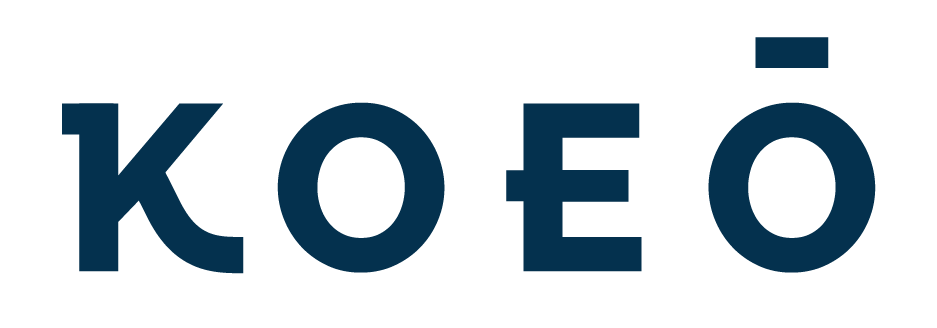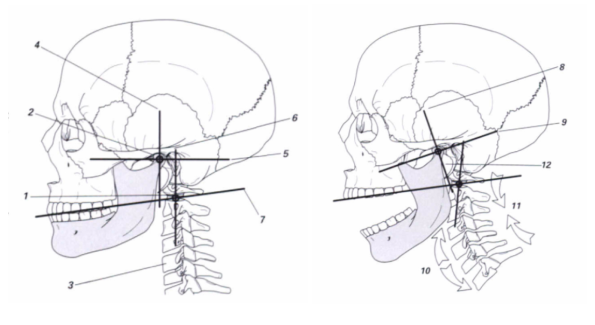Jaw Pain Demystified: Tracing the Origins from Your Upper Cervical Spine to Jaw
Jaw pain, tension and bruxism (also known as TMJ disorder) can absolutely originate from within the jaw, but did you know it could also be caused by issues in your neck (cervical spine) or even your pelvis?
In this blog we’re going to take a deeper look at the main root causes that we see for jaw pain, tension and bruxism.
A summary of what we’ll cover:
> Reason 1: Jaw Pain Emerging from Within (how pain can originate from within the jaw itself)
> Reason 2: The Pelvis-Neck-Jaw Connection
> Reason 3: The Upper Cervical Spine-Jaw Connection
> Common Signs That Your Jaw Tension is Originating From Your Neck or Pelvis
> Complimentary 15-Minute Consultation: Clarify the Origin of Your Jaw Tension
Once a month we send out KOEO Loves - a compilation of our latest blogs or our 5 fave things for healing and health. Sign up below.
Reason 1: Jaw Pain Emerging from Within
One of the two main reasons we see clients having pain or tension in their jaw is that it originates directly from within the jaw joint.
Your jaw joint is made up of two bones fitting together with a little disc in between that acts like a cushion. This disc is attached via ligaments and muscles to the surrounding bones of your skull, both inside and outside the mouth.
When this disc stops tracking and moving normally it can cause clicking, sticking, popping, and even a dislocating type sensation when opening and/or closing your jaw.
This usually shows up with pain, a difficulty opening the mouth wide and discomfort when chewing on that side.
As there are so many connections from the disc and the jaw joint itself to the surrounding structures, this can be contributed to by an imbalance or tension in any of the surrounding ligaments or muscles.
In these cases looking for a good TMJ Therapist is often the best starting point. The TMJ Therapist can assess where the tension is and help to release it, whether its inside or outside of the mouth. Usually through a course of sessions tension is released and relief is felt in the jaw as it begins to move and track in a more normal way.
Depending on how much damage (if any) is done to the disc, will depend on the longterm prognosis. Some people can achieve a 100% resolution whereas others do not.
Reason 2: The Pelvis-Neck-Jaw Connection
The second reason we see clients with jaw tension, and especially bruxism or clenching, is due to a more global body imbalance.
There are numerous connections between your pelvis, your neck (especially the upper cervical spine) and your jaw. A research study showed an immediate change in body alignment when changing jaw position, so we know that it can go both ways.
Firstly, a connection comes from as far back as day 15 of our embryological development, when both the jaw and pelvis are created from the same embryonic tissues.
Secondly, an important fascial line (a pathway of connective tissue that links up different muscles throughout the body) runs from the muscles of the pelvis directly into the muscles of the neck and jaw.
Thirdly, there is a dural connection (an inelastic membrane that surrounds your spinal cord) that connects your sacrum (the small triangle bone in your pelvis) to your cranium (your skull). Specifically this membrane attaches to your C1, C2 and C3 vertebrae and then passes freely all the way down to your pelvis where is attaches to your sacrum.
Reason 3: The Upper Cervical Spine-Jaw Connection
Lastly, there is a theory that suggests a direct link between the opening and closing of the jaw with the movement of the upper cervical spine. In order for the jaw to follow its normal pattern of opening and closing, it relies on normal movement between the C1 and C2 bones of your neck.
Image source: Hugh Milne, The Heart of Listening Vol. 2
Due to this intimate connection we see many clients who have jaw tension coupled with an Upper Cervical or Pelvic imbalance.
Taking it one step further, due to the direct nerve connections from the Upper Cervical region into the head, face and jaw, an Upper Cervical issue is a real consideration for clients with persistent jaw issues.
In fact, research shows that cervical spine disorders coexist in 70% of the time with TMJ disorders.
In these clients the symptoms in the jaw tend to show up more often as tension, grinding (bruxism) and clenching and are usually combined with other signs of a whole body imbalance.
Common Signs That Your Jaw Tension is Originating From Your Neck or Pelvis
The common set of symptoms we see in clients who have jaw tension as a result of a pelvic or neck issue are:
Neck or shoulder tension
Headache
Lower body tension or injuries (can be back, hips, knees)
Plus signs of an Upper Cervical issue affecting the autonomic nervous system such as disturbed sleep, digestion and stress response.
For these clients we recommend Upper Cervical care first, which we would then couple with TMJ Therapy if needed once your whole body imbalances are back to normal.
We also do have clients who have whole body imbalances AND an internal jaw joint / disc problem that creates the pain, clicking and locking.
Complimentary 15-Minute Consultation: Clarify the Origin of Your Jaw Tension
If you’re not sure which category you fall into, we’re here to help. Book a phone chat with Sophie and she’ll help you know which is the best path forwards.
RELATED POSTS








